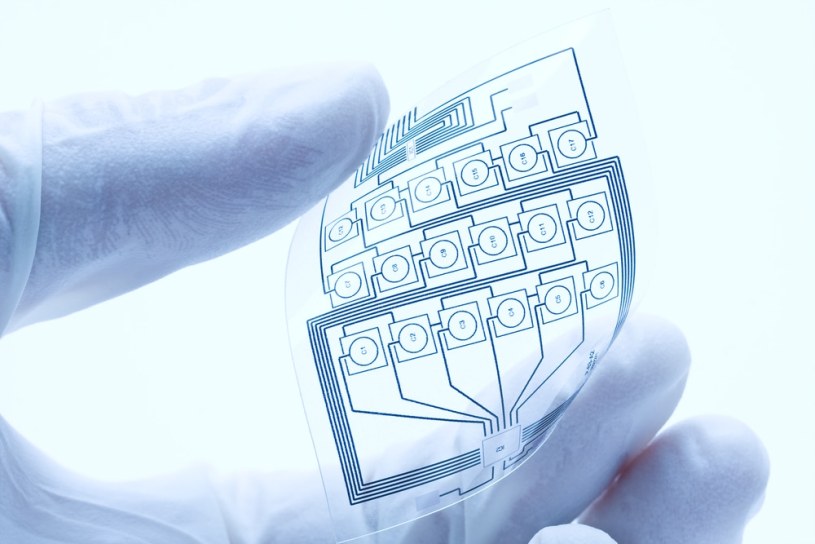This report summarizes the state of the art in flexible electronics and their applications. It also explains how flexible sensors can be used in newer technologies such as mobile phones and portable electronics.
To understand the potential of flexible electronics, you first need to know what they are, who uses them, and why they are used. Once you know the current trends in flexible electronics, you should know what is coming in the future so that you can plan accordingly.
How and where flexible electronics are used may be limited only by an engineer’s imagination and design. Components will become more flexible, circuits will require less power, materials will make interaction with flexible devices more pleasant, and so on.
All these applications require components of modern electronic devices to adapt to the flexibility of displays, screens and power sources. It is necessary to evaluate how to manufacture thin, flexible, compliant and compliant products, while taking into account sources for integrating and providing flexible electronic components that can meet these specifications. How exactly is flexible electronics manufactured and how do they find their way into modern electronic devices? This research falls under the umbrella of flexible and stretchable electronics, which aims to have conventional electronic systems manufactured on ultra-thin plastics or rubber-like substrates.
The thinner they are, the more flexible they can be, meaning that we could one day see them in a variety of applications, including smartphones, tablets, computers, and other devices. Because flexible substrates can adapt to specialized shapes, people need not worry that flexible circuits will not work in devices whose devices are uniquely shaped by the product.
Imagine, for example, a tiny smartphone that wraps around your wrist or a flexible display the size of a TV. With flexible electronics, we will eventually have keyboards that are so compact that they can even be put in your pocket or crumpled.
Many of these innovative devices will be coming to consumers in the near future, and the medical world is experiencing a huge return to flexible electronics. Global Electronic Services has great confidence that flexible electronics will continue to improve and open the door for us to use them. Although there seem to be some technical limitations at the moment, they will eventually be overcome and many of the incredible ideas could become reality in our not too distant future through flexible electronics.
Organic light – emitting polymers (OLEDs) are those that are already widely used in electronic devices. These materials can be used to create hard and flexible graphene displays for a wide range of applications in medical devices such as blood pressure monitors. Despite these challenges, flexible electronics promises a lot – a change in the world of electronics and an enormous opportunity for innovation.
As this field develops, people will be able to print flexible electronic components on cheap substrates such as plastic films. Liquid metals could serve as attractive candidates for flexible electronics, and ALD could facilitate the development of new materials such as liquid metal oxide (LMO) and liquid gold, and push down the cost of flexible electronic devices further.
With the advancement of future manufacturing technology, graphene is likely to become the dominant material for flexible electronics. The ability to use graphene to produce flexible electronic components such as flexible batteries, sensors and sensors is already well advanced. Stretchable electronics, or “flexible electronics,” is likely to be the future of mobile electronics, as leading companies integrate this technology into their mobile devices.
We expect other manufacturers to follow suit quickly and we can expect an influx of flexible electronic devices in our daily lives. In 2013 and the years to come, numerous products with flexible electronic technology will be launched on the market. Do you think this trend is accelerating or do you expect it to accelerate?
As flexible electronics continue to refine their performance, there will be a wide range of new applications in the coming years, especially for mobile devices.
This book provides an overview of flexible electronics, which refers to the flexible materials used in the manufacture of electronic circuits and optoelectronic devices. It provides examples of how printed and flexible electronic devices are applied to healthcare applications. Flexible electronics are devices made of a variety of materials such as glass, metal, plastic and other materials. They form the basis for a wide range of assembly electronics, from mobile devices to medical devices and medical devices.
Flexible electronics is essentially paper-printed conductors – in this case, based on flexible substrates, combined with a conventional silicon tool mounted on top of them. ICs, but for pressure etching, soldering and adhesive they are still used as rigid, conventionally packed IC’s.
As a result of this change, products with flexible electronics often have the durability and size required for easy transport. Flexible electronic devices also tend to be lighter and easier to integrate into the end product.
